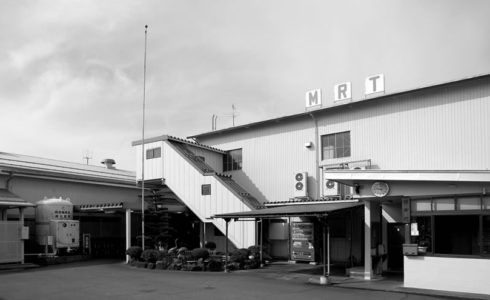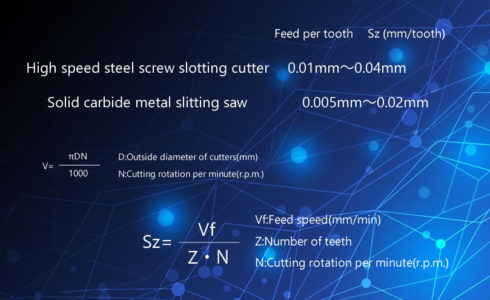Feature of Carbide Metal
The characteristic of Solid carbide products

This meticulous manufacturing process allows excellent axial runout of side face and roughness, as well as dramatically improving the roughness of machined surface in contrast to the original high speed steel products.

The high speed cutting of varied materials such as nomal steel and cast iron saves time in the manufacturing process.

In contrast to high speed steel products, solid carbide products are far more resistant to wear. This means that tools are replaced less frequently, and at lower cost.
The characteristic of Solid carbide products
- As long as the cutting depth is not affected, please use the largest possible flange, and attach to the main shaft from both sides.
- Metal slitting saws and screw slotting sutters become more and more vulnerable to vibrations and thrust stress as their thickness decreases. Therefore the machinery used should be in top condition.
- Vibrations outside and from the side may cause problems. Therefore please make sure there are no external vibratinons.
Carbide grades recommendation
| JIS | Performance range | Work | Features / Applications | |
|---|---|---|---|---|
| P10 | ↑ Wear resistance Toughness ↓ | Carbon steel, Alloy tool steel, Cast steel, Stainless steel, Heat-resistant alloys | Strong against creater wear (tooth face), but vulnerable to chipping. To be uesd when processing is relatively easy. | |
| P20 | Carbon steel, Alloy tool steel, Cast steel, Stainless steel, Heat-resistant alloys, Malleable iron castings | Used in cutting normal steel and cast steel. | ||
| P30 | Carbon steel, Alloy tool steel, Cast steel, Stainless steel, Malleable iron castings | Used when processing is relatively difficult. ※1 | ||
| P40 | Carbon steel, Alloy tool steel, Cast steel, Stainless steel | Used in cutting large areas at low speed. Best when processing is extremely difficult. | ||
| M10 | ↑ Wear resistance Toughness ↓ | Cast iron, Stainless steel, Heat-resistant alloys, Malleable iron castings | Used when cast iron processed by cutter at high cutting speed, at high feed speed. Or used when the processing is fairly easy. | |
| M20 | Carbon steel, Alloy tool steel, Stainless steel, Heat-resistant alloys, Malleable iron castings, Ductile iron castings | Can be used when cutting nomal steel as well as cast iron. Best used when shocks from machinery, heat, chipping and cracking may result during cutting process. | ||
| M40 | Cast iron, Carbon steel, Alloy tool steel, Stainless steel | Used when toughness is most required. | ||
| K01 | ↑ Wear resistance Toughness ↓ | Hard cast iron, Chilled cast iron, Thermal refining steel, Cast iron, Stone material | Used when wearing down from abrasive frictions (wear of flank face) is problematic, as opposed to damage from the heat caused by rough or hard surfaces. | |
| K10 | Chilled cast iron, Thermal refining steel, Cast iron, Aluminum alloy | Used for cutting cast iron. It also lasts longer than other carbide grades for steel cutting, for interrupted wet cutting of steel and sensitive feed, thin depth of cut. | ||
| K20 | Cast iron, Aluminum alloy, Non-ferrous metals, Wooden material | Best used when cutting non-ferrous metals in which small wedge angle and toughness is required. | ||
| Micro grain carbide | Z01 | ↑ Wear resistance Toughness ↓ | Steel, Cast iron, Non-ferrous metals, Non-metallic materials | Best used when cutting requires sensitive feed, thin depth of cut, high precision at low speed. Toughness is retained even though it keeps the hardness of the normal carbides because of micro structure. Best fit for precision machining of tools with small diameter and thickness. |
| Z10 | ||||
| Z20 | ||||
※1 The processing difficulty is said to be “hard” when the material to be cut has uneven surfaces or hardness that requires varying conditions. The difficulty can also increase if the machinery, the cutting tools, and materials do not fit, or suffer from heavy vibrations.





